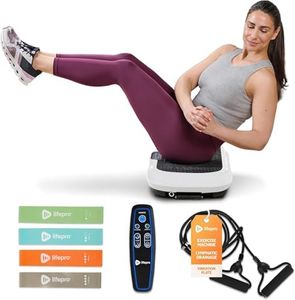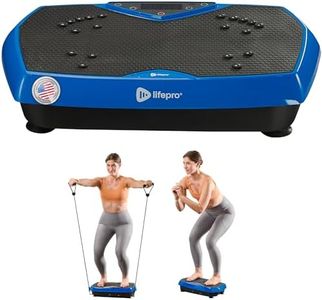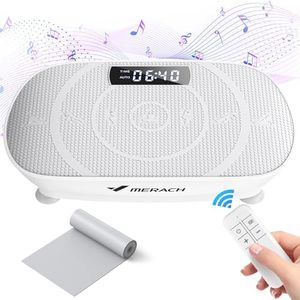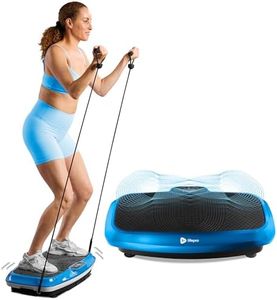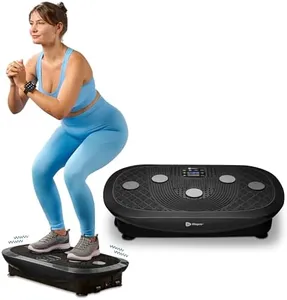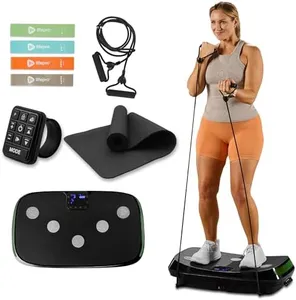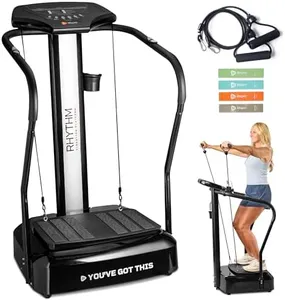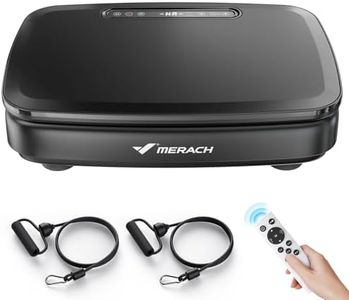We Use CookiesWe use cookies to enhance the security, performance,
functionality and for analytical and promotional activities. By continuing to browse this site you
are agreeing to our privacy policy
10 Best Vibration Machines
From leading brands and best sellers available on the web.Buying Guide for the Best Vibration Machines
Choosing a vibration machine can be a great way to enhance your fitness routine, improve muscle tone, or aid in recovery. The right machine for you depends on your fitness goals, available space, and how you plan to use it. Understanding the key features will help you make a choice that fits your needs and ensures you get the most benefit from your investment.Vibration TypeVibration machines generally use either oscillating (side-to-side), linear (up-and-down), or tri-planar (multi-directional) movements. Oscillating machines are often gentler and good for beginners or those looking for weight loss and general fitness. Linear machines provide a more intense workout, suitable for muscle building and advanced users. Tri-planar machines combine both movements for a comprehensive workout. Consider your fitness level and goals when choosing the vibration type; beginners or those with joint concerns may prefer oscillating, while athletes might opt for linear or tri-planar.
Frequency RangeFrequency, measured in Hertz (Hz), refers to how many times per second the platform vibrates. Lower frequencies (5-15 Hz) are typically used for balance and relaxation, mid-range (15-30 Hz) for muscle activation and toning, and higher frequencies (30-50 Hz) for strength training and advanced workouts. If you want gentle stimulation or recovery, look for machines with lower frequencies. For more intense workouts, a higher frequency range is better. Some machines offer adjustable frequencies, which is ideal if you want versatility.
AmplitudeAmplitude is the distance the platform moves during each vibration, usually measured in millimeters. Lower amplitudes (1-3 mm) provide a subtle effect, suitable for beginners or those focusing on balance and circulation. Higher amplitudes (4-10 mm) deliver a stronger impact, better for muscle building and more intense workouts. If you are new to vibration training or have sensitive joints, a lower amplitude is safer. For experienced users seeking more challenge, a higher amplitude is preferable.
Platform SizeThe size of the vibration platform affects how much space you have to stand, sit, or perform exercises. Smaller platforms are compact and easy to store, but may limit your movement. Larger platforms offer more exercise options and comfort, especially for taller users or those wanting to do a variety of workouts. Consider your available space at home and the types of exercises you plan to do when choosing the platform size.
Weight CapacityWeight capacity indicates the maximum user weight the machine can safely support. Machines with higher weight capacities are generally more stable and durable. Always choose a machine that can handle your weight plus a safety margin to ensure longevity and safety during use. If multiple people will use the machine, consider the heaviest user.
Preset Programs and ControlsMany vibration machines come with preset workout programs and adjustable controls for speed, time, and intensity. Preset programs can guide you through different routines, making it easier to get started and stay motivated. If you prefer variety or need guidance, look for machines with multiple programs and easy-to-use controls. If you want to customize your workouts, ensure the machine allows manual adjustments.
Noise LevelNoise level is important if you plan to use the machine in a shared space or apartment. Quieter machines are less disruptive and more pleasant to use. If noise is a concern, check user reviews or product descriptions for information on sound output, and consider machines designed for quiet operation.

